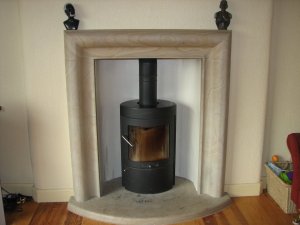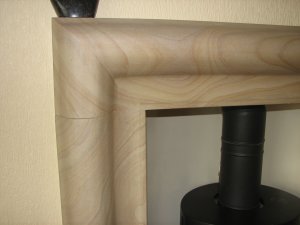Bespoke stone fireplaces can really bring a room together as a centrepiece. In this short blog we will teach you how to care for your stone fireplace.Armstrongs Group offers a wide range of bespoke cut stone products that are tailored to your every need. We use stone from our five quarries to produce the highest quality product. Sandstone from Waddington Fell being most popular and prominent in production.Waddington Fell Quarry covers 66 acres near the town of Clitheroe, and has been operational since the 1960’s.The quarry offers a range of sandstones, variable in strength and colour and has been worked in the traditional method of crushing and screening following blasting to produce aggregate materials. The stone from Waddington fell also forms excellent cut products such as fireplaces, lintels, and even complete houses.

How To Clean Your Fireplace
There are a number of ways to clean your fireplace depending on what type of stone the fireplace is made from.The fireplaces we produce are made from sandstone and thus are porous and easily scratched. We recommend that to clean sandstone fire places you do NOT use any chemical cleaners of any kind. Chemical cleaners may remove stains and marks but they also damage the stone. Clean warm water is the best way to clean a sandstone fireplace.To remove ash and other dirt from a sandstone fireplace we also recommend that you use a brush with natural bristles- like horsehair. A simple microfiber cloth can also damage sandstone so gentle and smooth motions with a horsehair brush are ideal to clean the stone up.If your fireplace is made up of other forms of stone material such as granite or marble then there is a different method to cleaning. Using warm water, a sponge and a household cleaning product, wash the fireplace until clean. Let the stone dry naturally before polishing. It is worth noting here that different types of stone react differently to cleaning products so always read the label before application. A neutral PH cleaner designed for stone will be available from most large hardware stores.A vacuum cleaner also provides a quick and easy solution to cleaning those hard to get dust and ash spots. To avoid staining it is recommended sealing your stone fireplace.
Sealing Your Stone Fireplace
Depending on the type of stone your fireplace is made out of will dictate what type of sealant you need. It is important to fully clean and dry your fireplace before adding a sealant. Stone is porous and ash, dust, dirt and debris can find its way under the surface out of reach of any deep cleaning.

Choosing The Right Sealant
Fireplaces can be made from a variety of stone. It is important to find the right sealant for your fireplace. Granite, Marble and Sandstone are all common materials in fireplaces and all have different densities. Sealants can come in water or silicone bases and it is vital you use a sealer designed for the stone you have. In general Silicone based sealants will seal better than water based sealants. For porous stones, like our sandstone from Waddington Fell, sealers that reach below the surface such as silicone sealants are necessary to fill all porous holes. Granite and marble are denser than sandstone. They can use a more water bases sealant to achieve protection from debris and stains.

How to apply a sealant
Once the stone is fully dried- you will know it is fully dried when the stone returns to its natural colour- you can apply the sealant. Using a soft foam brush you can apply the sealant to the fireplace. It is recommended that you overlap each stroke to avoid missing any area.Once the fireplace is completely covered allow the sealant to settle into the pores of the stone for 10-20 minutes before wiping any excess using a soft cloth. Apply additional coats if required before wiping away remaining excess.
Reapplying The Sealant
Granite, marble and sandstone all require resealing with time. To determine when a fireplace needs resealing it is worth doing a simple visual check. Sprinkle a little water on the surface of your fireplace. The water should pool up on the surface of the stone. If the water is soaked up by the stone or changes the colour of the stone (to a darker damper colour) then the fireplace will need a new coat of sealant. Brush away any dirt, clean the fireplace as highlighted above and reapply the sealant coat. We recommend doing a visual check once a month for the first year. This will allow you to better determine when your fireplace needs resealing in future. For more information about our Cut Stone products you can visit the
product page on our website.

To discuss how we can work with you to create bespoke stone fireplaces for your home or workplace get in touch with us today. Alternatively you can follow us on
Facebook,
Twitter and
Instagram to see behind the scenes of our cut stone projects.








 To discuss how we can work with you to create bespoke stone fireplaces for your home or workplace get in touch with us today. Alternatively you can follow us on Facebook, Twitter and Instagram to see behind the scenes of our cut stone projects.
To discuss how we can work with you to create bespoke stone fireplaces for your home or workplace get in touch with us today. Alternatively you can follow us on Facebook, Twitter and Instagram to see behind the scenes of our cut stone projects.